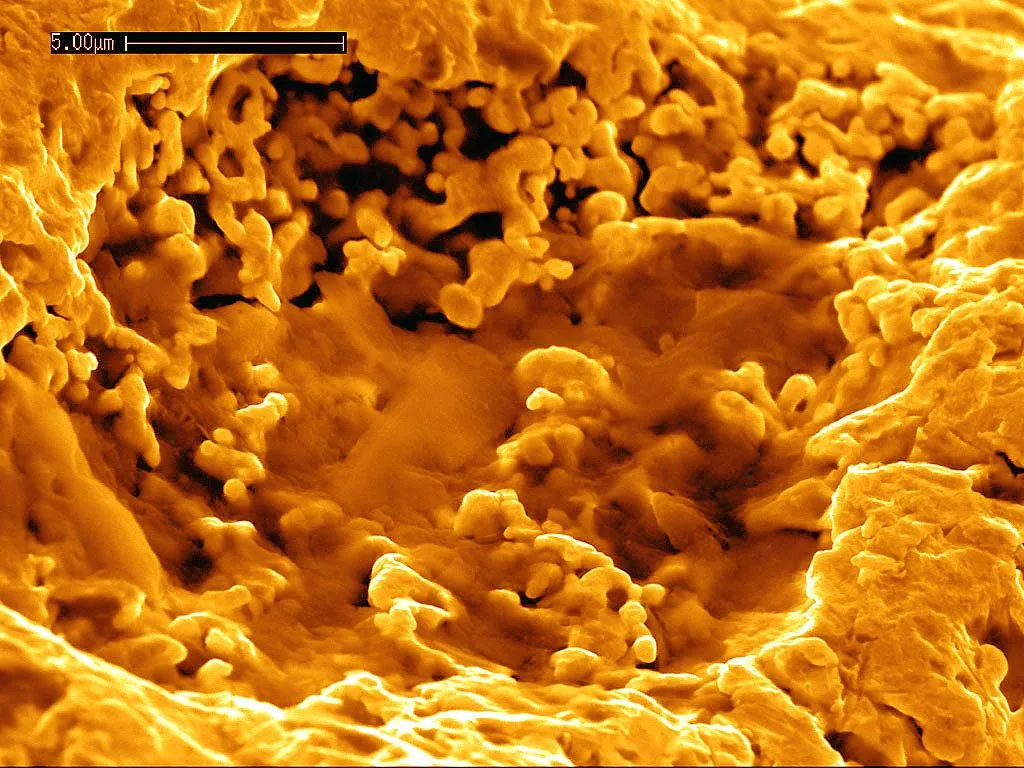So, this is something interesting my wife shared with me the other day. Anyone following my posts knows I have a thing for strange animals / organisms. And I love stacking precious metals.
Today's post combines a bit of both 😳😂
What am I talking about?
Meet...
Cupriavidus metallidurans
So, apparently there is this microorganism called Cupriavidus metallidurans. Our little friend is an extremophile. I have talked a bit about extremophiles in my recent post on Conan the bacterium so feel free to check that post too if you like. The tldr is that extremophiles are microorganisms found in really extreme conditions of temperature, pH, pressure, etc etc and occasionally a combination of some.
Anyways, back to Cupriavidus metallidurans. This guy thrives in soils that are full of heavy metals. Soils that are deadly to most organisms. And some of these deadly compounds are forms of toxic gold.

A scanning electron microscope image of a gold nugget with bacterioform structures, source
And these bacteria take that "dirty", toxic gold and poop clean gold nuggets, lmao 😂
Researchers who made this discovery had noticed since 2009 that the bacteria could deposit solid gold into the immediate environment, but they had no idea of how. It took them almost another decade to find and describe the mechanisms behind this process.
If you are into some heavy reading here's a link to the actual paper. Honestly, it's all mumbo jumbo to me. 😂
So here's a simplified break down from the press release of the study instead that makes more sense to idiot plebs like us:
It all starts with gold entering the bacteria:
Gold enters the bacteria the same way as copper. Copper is a vital trace element for C. metallidurans however it is toxic in large quantities. When the copper and gold particles come into contact with the bacteria, a range of chemical processes occur: Copper, which usually occurs in a form that is difficult to be taken up, is converted to a form that is considerably easier for the bacterium to import and thus is able to reach the interior of the cell. The same also happens to the gold compounds.
When too much copper has accumulated inside the bacteria, it is normally pumped out by the enzyme CupA. However, when gold compounds are also present, the enzyme is supressed and the toxic copper and gold compounds remain inside the cell. Copper and gold combined are actually more toxic than when they appear on their own. To solve this problem, the bacteria activate another enzyme - CopA.
This enzyme transforms the copper and gold compounds into their originally difficult to absorb forms. This assures that fewer copper and gold compounds enter the cellular interior. The bacterium is poisoned less and the enzyme that pumps out the copper can dispose of the excess copper unimpeded. Another consequence: the gold compounds that are difficult to absorb transform in the outer area of the cell into harmless gold nuggets only a few nanometres in size. source
Yeah, still doesn't make much sense to me
Anyways.. Apparently all I need is to find and buy some hectars full of toxic gold and a pack of Cupriavidus metallidurans and I can finally retire growing gold nuggets 🥳🥳🥳💲💲💲
Yeah, not happening anytime soon _
It may actually even be a bad idea as it might be pathogenic to humans as a past case report has shown. To be fair, it's just one case that has ever been reported so it might be a rare incidence. It was an old guy after all (74) with diabetes so I guess his immune system wasn't at its best XD
Anyways friends. Hope you found this an interesting read. As always, feel free to click any of the links above to read the boring semantics!
More Strange Animal Stuff
If you enjoyed this post here are some more amazing creatures I have recently blogged about:
- The Glowing Millipede
- The dead leaf moth
- The "flies eating bird shit "-like moth
- The Ant-like Mantis
- The Moth That Mimics Jumping Spiders
- The Iron Snail
- The Snake with the Googly Eyes
- The Dead Leaf Butterfly
- The Snail Tank
- That's one epic goat
- Why These Butterflies Drink Turtle Tears
- The penguin that takes ten thousand naps..every single day
- Real life face hugger
